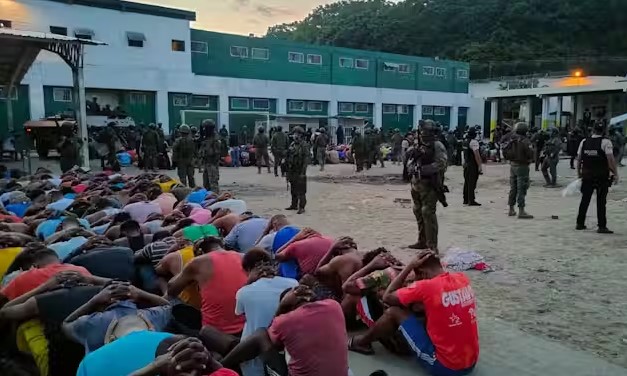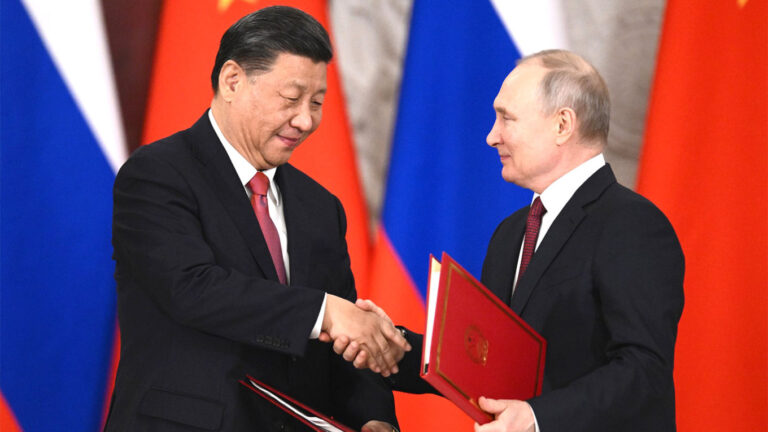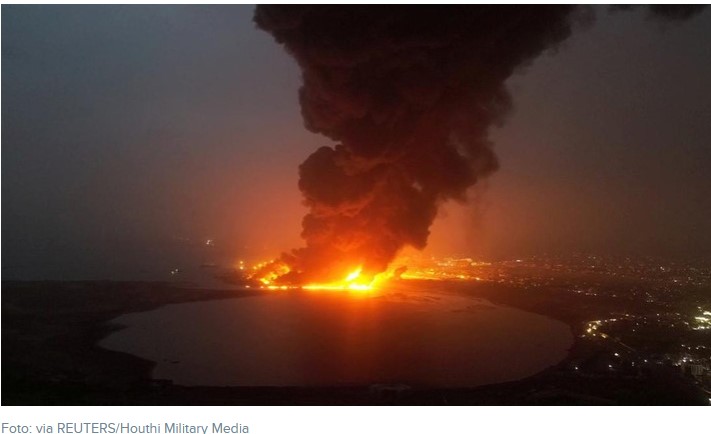
Geng Narkoba (The Conversation)
STRATEGIC ASSESSENT. In Ecuador, a recent disturbing series of events underscores the country’s years-long descent into widespread insecurity and gang-related violence. Several masked gunmen stormed a live broadcast on a major public television channel in the city of Guayaquil, carrying guns and explosives and forcing journalists to the ground live on air. The incident unfolded amidst a renewed wave of unrest in the country, reportedly including the escapes of two notorious gang leaders from prison, prison riots, and explosions and looting across several cities. As of yesterday, the government stated that 178 guards and staff were being held hostage by gang members in a standoff with security forces. Attacks on five hospitals and a university by gunmen have also been reported. Recently elected Ecuadorian President Daniel Noboa has called upon the armed forces to restore order and declared a 60-day state of emergency, which includes the suspension of the right to assembly and institutes a nightly curfew. The president also issued a decree designating at least twenty drug trafficking gangs as “terrorist organizations and belligerent non-state actors,” authorizing the Ecuadorian military to “neutralize” criminal gangs.
This most recent eruption of violence traces back to a failed attempt earlier this week to transfer the leader of the cartel Los Choneros José Macias Villamar, also known as “Fito”, to a supposedly safer prison, triggering riots across multiple penitentiaries. Los Choneros, which works closely with the notorious Sinaloa cartel based in Mexico, is believed to be behind many of the prison riots and fights that have embroiled Ecuador in recent years. The Jalisco New Generation cartel, also based in Mexico, is active in Ecuador as well. A riot at the Penitenciaría del Litoral prison in Guayaquil this summer included violent clashes between organized criminal gangs and nearly one hundred guards being held hostage. The riots resulted in the deaths of thirty-one people and nearly 2,700 soldiers storming the prison to eventually retake control, according to government authorities. Powerful prison gangs are not uncommon across parts of Latin America, including in countries like Brazil, where narco-kingpins run their drug trafficking enterprises from behind bars. But historically, Ecuador has been a relative beacon of stability, a paradigm that has shifted as sophisticated Mexican drug cartels have moved into the country to set up shop. The events of the summer underscored the long-simmering insecurity in Ecuador, including a rapid rise in homicide and crime rates in recent years, perhaps even foreshadowing the recent transformation into near chaos.
The root causes of upheaval in the country extend beyond domestic issues, with the country’s strategic location between major cocaine-producing nations making it an attractive transit point for international drug trafficking networks. An analysis of trends in the transatlantic drug trade by the Center for Strategic and International Studies (CSIS) in September 2023 found that Ecuador is increasingly being used as a transit point to traffic drugs into Europe from cocaine-producing neighbors Peru and Colombia. Cocaine use has increased across Europe, the second most used illicit drug in the continent behind cannabis, according to the European Monitoring Centre for Drugs and Drug Addiction. The European market has become increasingly appealing to traffickers, with its higher prices and relatively lower risks, including lesser legal penalties for possession and consumption when compared to the United States. European anti-narcotics efforts, particularly in terms of money spent on supply-side reduction, do not match that of the U.S. – likely contributing to lower drug seizure rates, according to data by CSIS. In August, the largest stash of cocaine seized in Spain, roughly 9.5 tons, was hidden in an Ecuadorian banana shipment to Cadiz. That same month, in the Dutch port city of Rotterdam, nearly 8 tons of cocaine stashed in banana crates originating from Ecuador was seized – the largest in the port’s history. According to reporting by the New York Times, Major Edison Núñez, an intelligence official with the Ecuadorian national police, said that only about 20 percent of the 300,000 shipping containers that depart each month from Guayaquil port are searched by authorities. Compounding the chaotic environment are the international cartels that have taken advantage of the lenient law enforcement in Ecuador in recent years, including mafia groups from Mexico and Albania, with the latter allegedly having ties to government officials in Ecuador. The penal system in Ecuador has been at the center of the country’s problems. Poorly financed and corrupt prisons have increasingly become a place where prison gangs and drug cartels form alliances and fight turf wars. While funds from Europe and the U.S. have trickled in over recent years to redress the root of this international security threat, they have not transformed the penal system.
2023 was an especially tumultuous year for Ecuador, marked by political instability and rising gang violence. Last May, former Ecuadorian President Guillermo Lasso, facing impeachment for charges of embezzlement, invoked a constitutional measure called muerta cruzada, or mutual death, for the first time in the country’s history, dissolving the National Assembly and holding snap elections. Combatting violence and curtailing drug trafficking were key fixtures of campaigning in the lead-up to the election. According to Latin America journalist Joshua Collins, homicides have doubled in 2023 compared to the previous year. In August, presidential candidate Fernando Villavicencio, an investigative journalist focused on the connections between government officials and the narcotrafficking industry, was shot just two weeks before the election. Seven of the suspects in the assassination were murdered while in prison, underscoring the pervasive instability that has turned a once peaceful outlier comparatively in the region into one of the most violent. While multiple of the suspects were Colombian nationals, their affiliations remain unclear. Some have posited that Ecuador may potentially follow the policy of heavy-handed crackdown on gangs and cartels, as seen in El Salvador and Honduras. As Ecuadorian President Noboa ran his election campaign primarily on a platform of stability and security, it is likely that he will opt for the approach of building and filling maximum-security prisons as piloted by Salvadoran President Nayib Bukele. In a video on Monday, Noboa warned that “the time is over when drug-trafficking convicts, hit men and organized crime dictate to the government what to do” announcing the clampdown to come. Moroever, an inability to control the violence in Ecuador and restore order will continue to fuel emigration from the country to the United States, reflecting a broader trend in several other Central and South American countries. In the first eleven months of 2023, U.S. Border Patrol apprehended nearly 99 thousand Ecuadorians who entered the U.S. irregularly, a 312 percent increase from the previous year, according to data from the U.S. Customs and Border Protection. If this trend continues, it is likely to compound insecurity in the region more broadly, as well as the humanitarian and security situation at the U.S. southern border.





